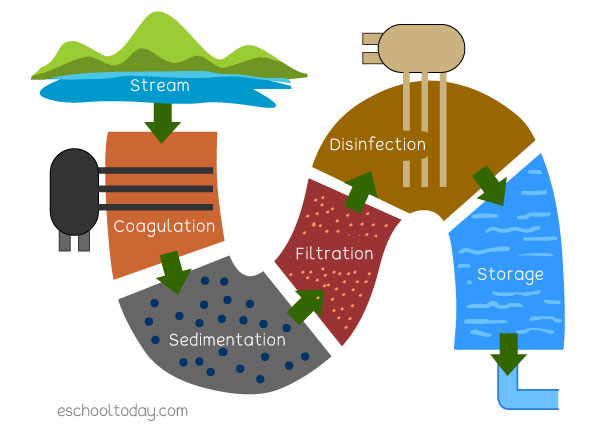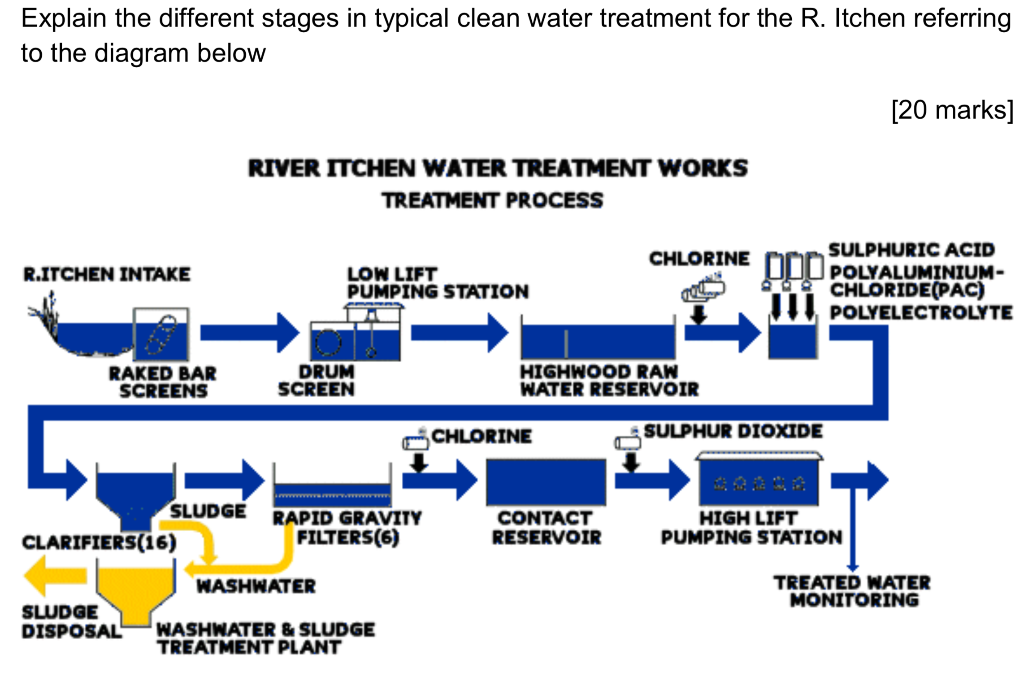Purifying Well Water - Truths
Table of ContentsExamine This Report on Purifying Well WaterThe Of Purifying Well Water8 Easy Facts About Purifying Well Water DescribedAll About Purifying Well WaterLittle Known Questions About Purifying Well Water.Some Known Incorrect Statements About Purifying Well Water
The resolved floc is eliminated from the clarifiers as sludge and also is pumped to holding shallows where it is further separated right into clear water (returned to the lake) as well as solid sludge (gotten rid of for disposal). In the fifth stage, any type of floc still remaining in the clearwater, adhering to the clarification process, is gotten rid of by purification.During the warmer months of the year, an additional therapy procedure called Carbon Adsorption (Phase 6) is added, to remove any type of taste and odour in the water. The Carbon Absorption stage is consisted of just throughout the warmer months of May to December. It includes large rectangular storage tanks (contactors) which contain Granular Turned on Carbon (GAC) to a deepness of 3 metres.
Chlorine is included to the water in the last, following the UV Disinfection. As a disinfectant, chlorine is very reliable at inactivating microorganisms and viruses, and is the most commonly made use of alcohol consumption water disinfectant. Chlorination has actually been used to boost the security of alcohol consumption water in Canada for the past 100 years.
The Only Guide to Purifying Well Water
Phase 1: mechanical water therapy, In the initial stage, the still completely unattended wastewater is mechanically treated; this removes concerning 20 - 30% of the had solids. To achieve this, the wastewater is led right into a screening plant, where a screen or screen drum strain coarse pollutants such as leaves, paper or textiles.
The mechanically-recovered display debris is dewatered and also dealt with in an incineration plant. The pre-purified water after that passes into what is called a sand collection agency. In wastewater treatment modern technology, a sedimentation container is utilized to eliminate rugged bits, such as stones, glass splinters or sand, in addition to rugged organic material that has not been separated out by the displays.
3 m/s. A difference is made in between the non-aerated lengthy sand enthusiast, the oxygenated lengthy sand collection agency likewise called a round sand collection agency, and also the round sand enthusiast. The oxygenated sand enthusiast removes extra fats as well as oils from the wastewater, and also the following takes place: the introduced procedure air generates a rolling activity in the water, which brings lighter compounds, such as oils and also fats, to the surface.
The Ultimate Guide To Purifying Well Water
A round sand collector divides substances from the drainage with centrifugal force as well as sucks them away. After cleaning up in the sand collector, the sand collection agency debris is cleaned and devoid of natural compounds. purifying well water. This improves the dewatering of the gathered inorganic product, which can, for example, be reused in roadway building.
The key wastewater treatment container is the following phase of wastewater treatment. The rate of the wastewater is approx. A low flow rate is needed so that the finer dirt bits can, depending on their nature, settle on the bottom or on the water surface area.
On standard, 30% to 40% of the air pollution is eliminated from the wastewater in this phase. On its method with the wastewater therapy plant, the wastewater now gets to the following our website stage of wastewater therapy - purifying well water.
Purifying Well Water Fundamentals Explained

The supply of oxygen promotes the multiplication of germs and also thus advertises the formation of triggered sludge. This procedure of biological wastewater therapy is for that reason also referred to as the triggered sludge procedure. The wastewater with the triggered sludge is released into the second wastewater treatment storage tank. The flow velocity of the wastewater stream is lowered once again below.
When the water has actually gotten to the legitimately suggested high quality, it can be gone back to the water cycle as an example, to a river. In lots of other cases, biological cleansing is not enough. In these situations, further wastewater have a peek at this website therapy processes are needed for instance, prep work in the type of a chemical treatment.
Some Ideas on Purifying Well Water You Need To Know
Phosphates are gotten rid of with a chemical precipitation or flocculation procedure. The phosphate precipitation is partially triggered by the addition of aluminium or iron salts in the sand enthusiast or in the additional wastewater therapy container. The metal-phosphate flocks that are created throughout this additional clarification are after that secured of the wastewater together with the turned on sludge.
Precipitants as well as flocculants are included in the wastewater, which creates flocculation of the compounds that will be divided. The wastewater with the flocculated material is after that passed through a cloth or sand filter. It slowly seeps via the filter layer. Also the smallest organic suspended solids are removed. Nanofiltration operates in very similar method.
The detoxified water is just returned to the water cycle when the legitimately suggested criteria have been met.
6 Simple Techniques For Purifying Well Water
Daily Water Use, On a typical warm summer day, Caon City water clients use sufficient dealt with potable water to cover 31 football areas one foot deep in water! In the wintertime the use drops to concerning 9 football fields worth a day. Prior to reaching the taps of Caon City residents, nonetheless, city water experiences an extensive treatment procedure.
The detoxified water is just gone back to the Learn More water cycle when the legally prescribed specifications have actually been satisfied.
